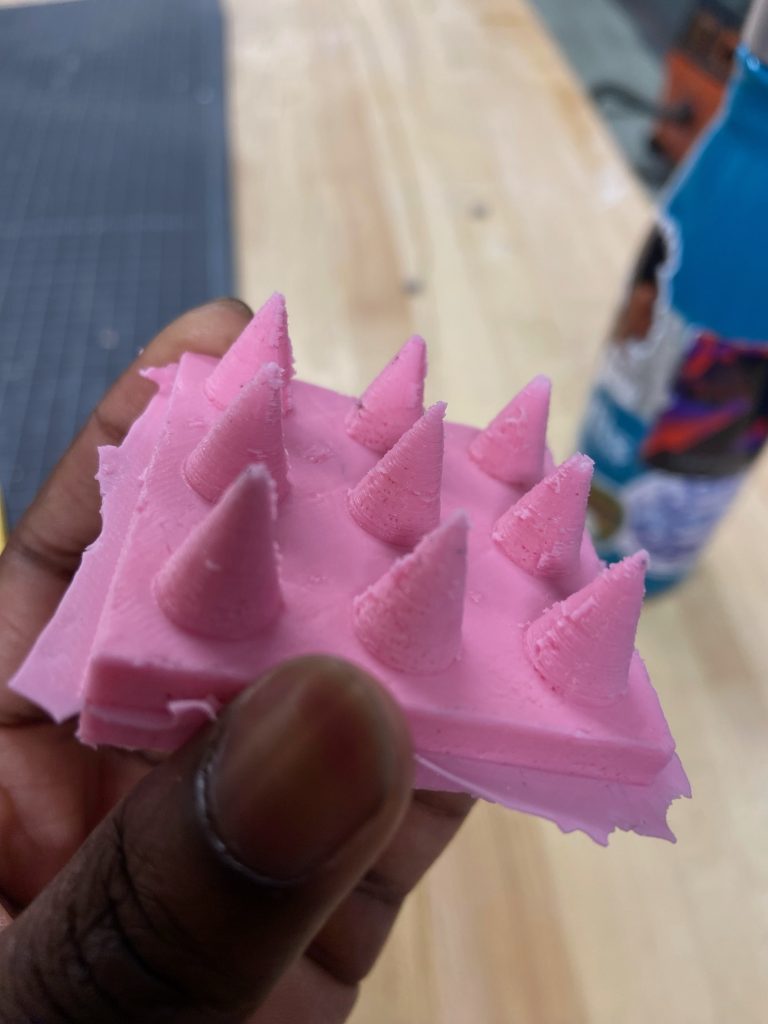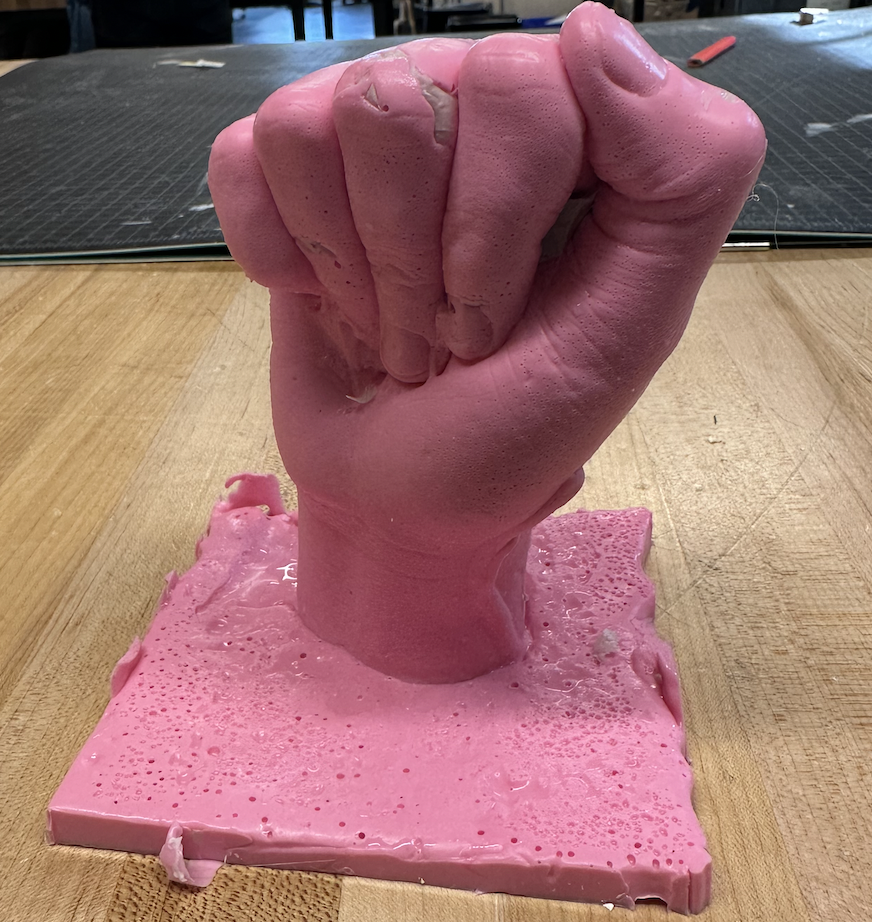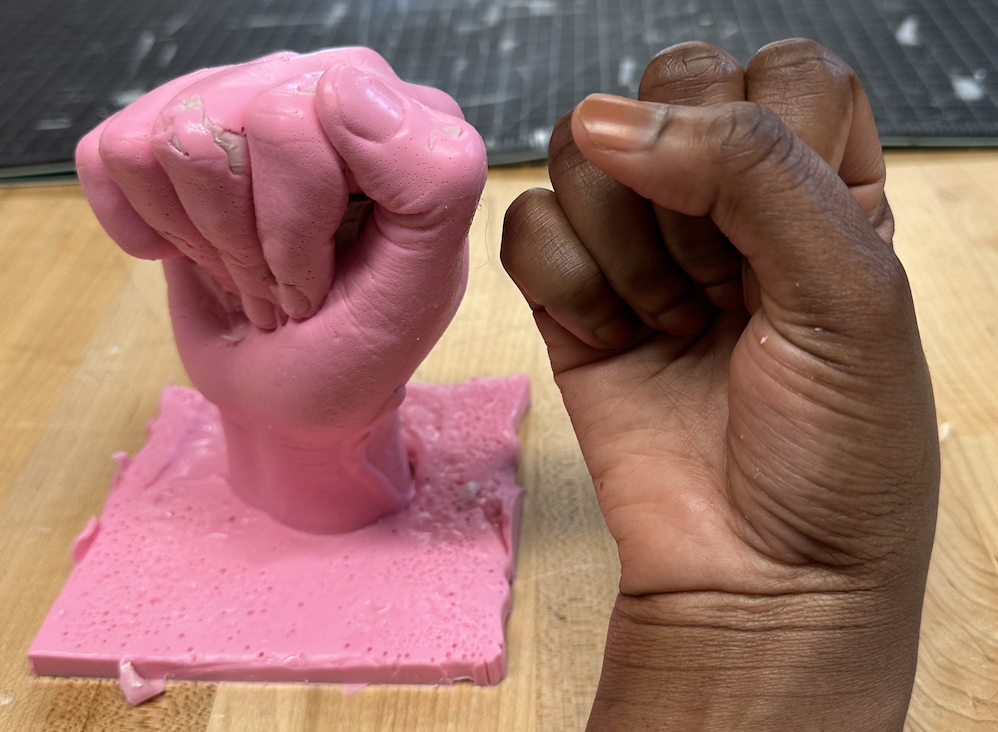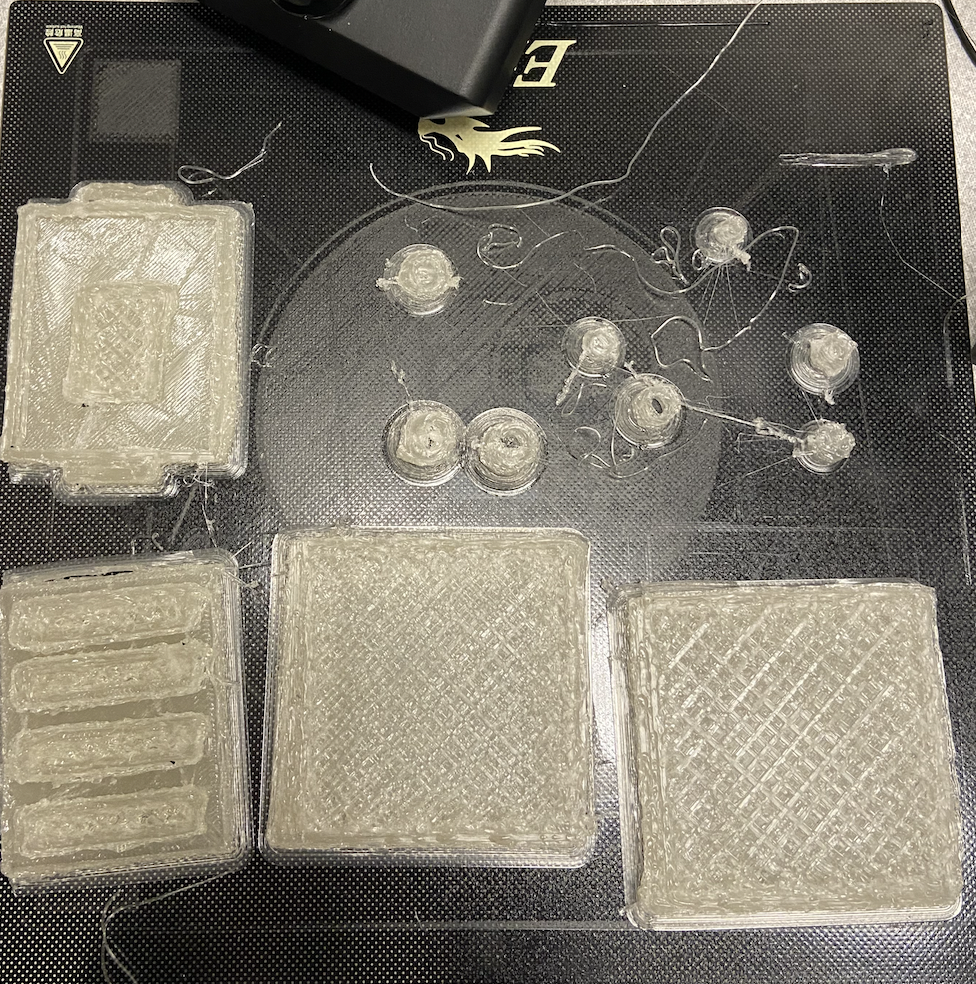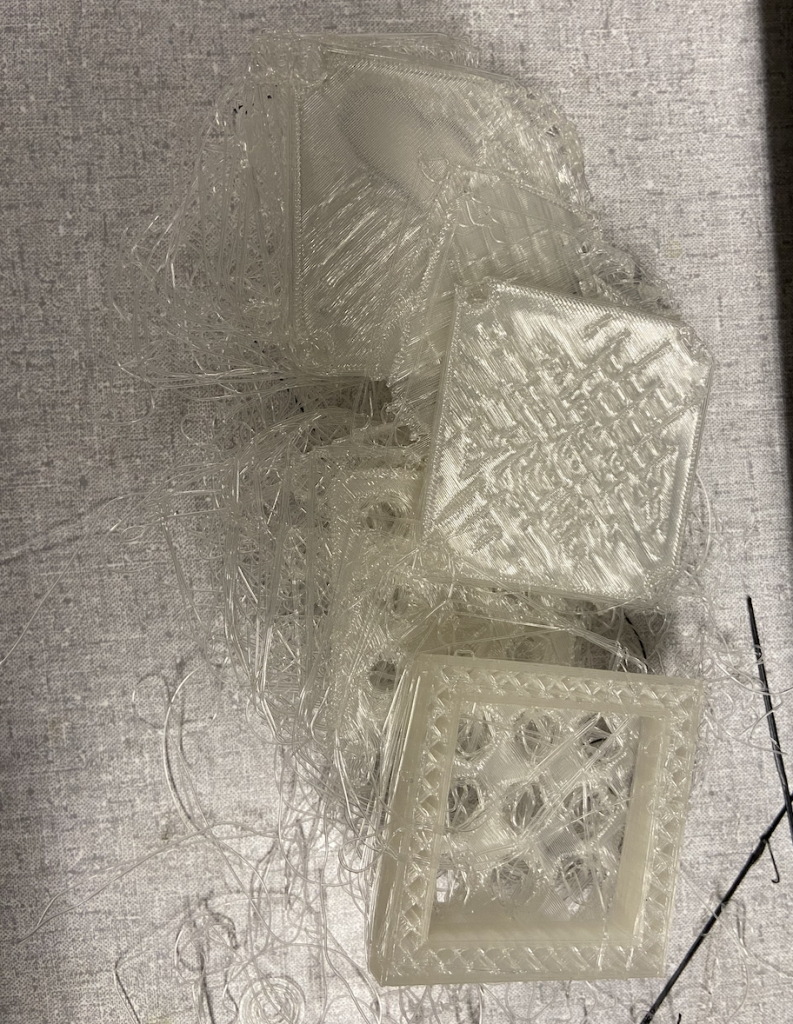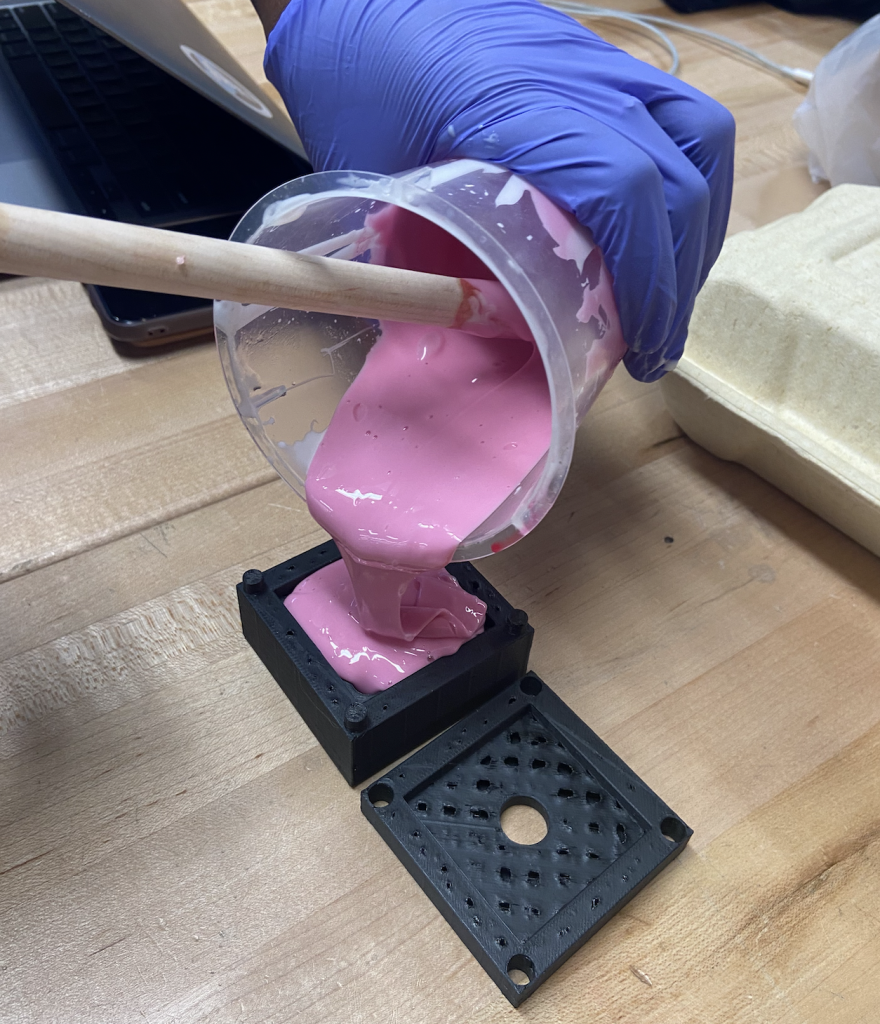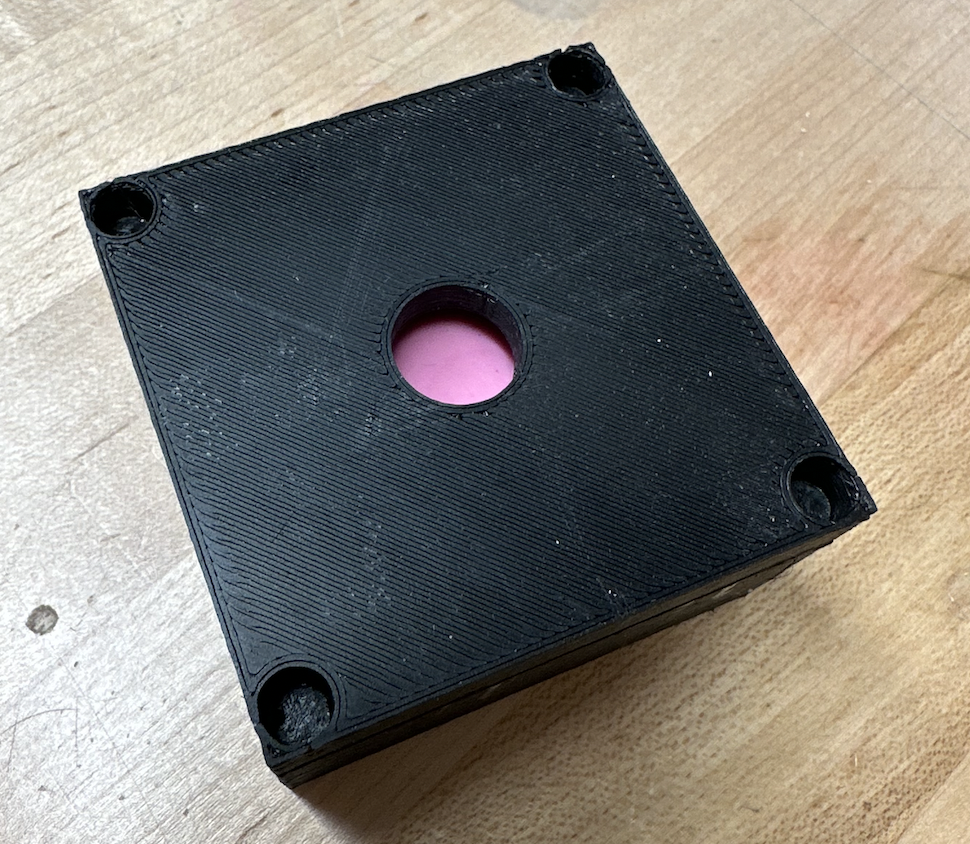One Piece Mold: Fist and Arm
Molding Material: Alginate Molding Powder
Casting Material: Mold Max™ 30 Silicone Mold Rubber
Attempt 1: Process: Mixed casting material with 1:1 powder to water ratio in a laser-cut box. Failed due to multiple reasons: (1) difficulty in achieving a homogenous mixture due to sharp edges of the box that retained some of the powder; (2) quick drying of the cast, resulting in uneven layer formation, making it difficult to properly place the hand in the mold.
Attempt 2: Process: To address previous issues, we mixed the casting material outside of the box in a measuring cup, allowing for a more homogenous mixture. Additionally, we placed the hand in the box before pouring the casting material, which allowed us to gradually pour the molding material until it reached the desired height. Although it was uncomfortable to keep my hand in the mold for over 30 minutes, the final result was much better than expected. After removing the hand from the mold, we prepared the cast using a mixture of silicone parts A and B and left it to sit overnight.

Mold Making in Progress 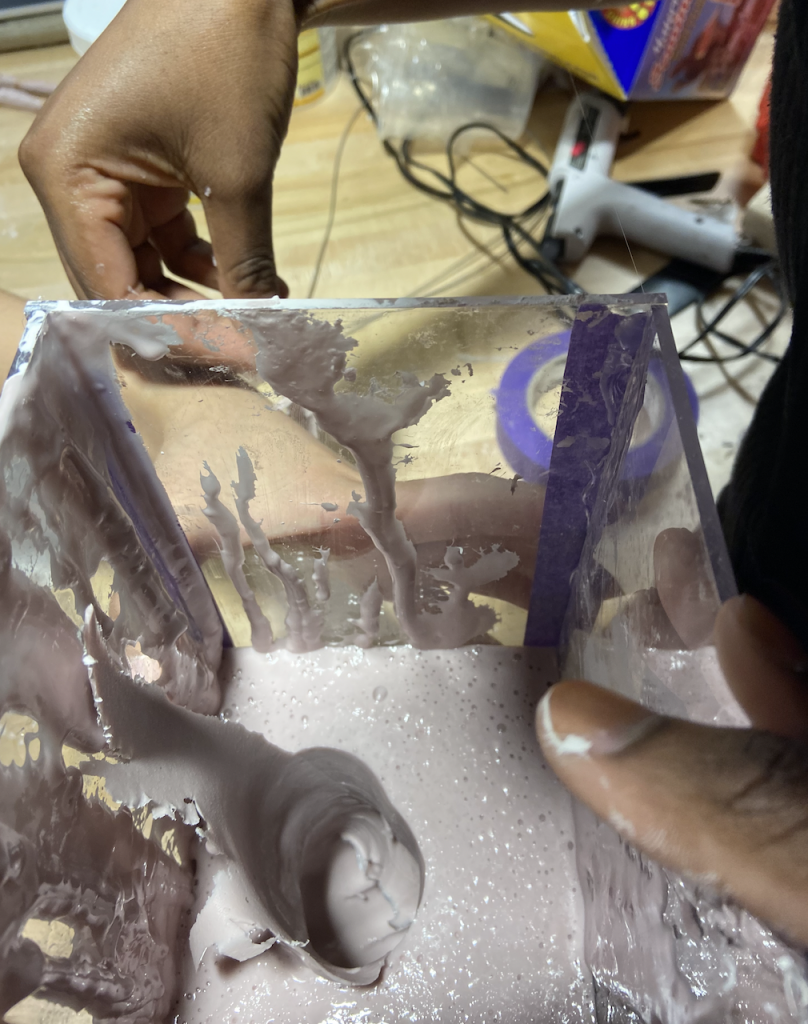
Mold finished 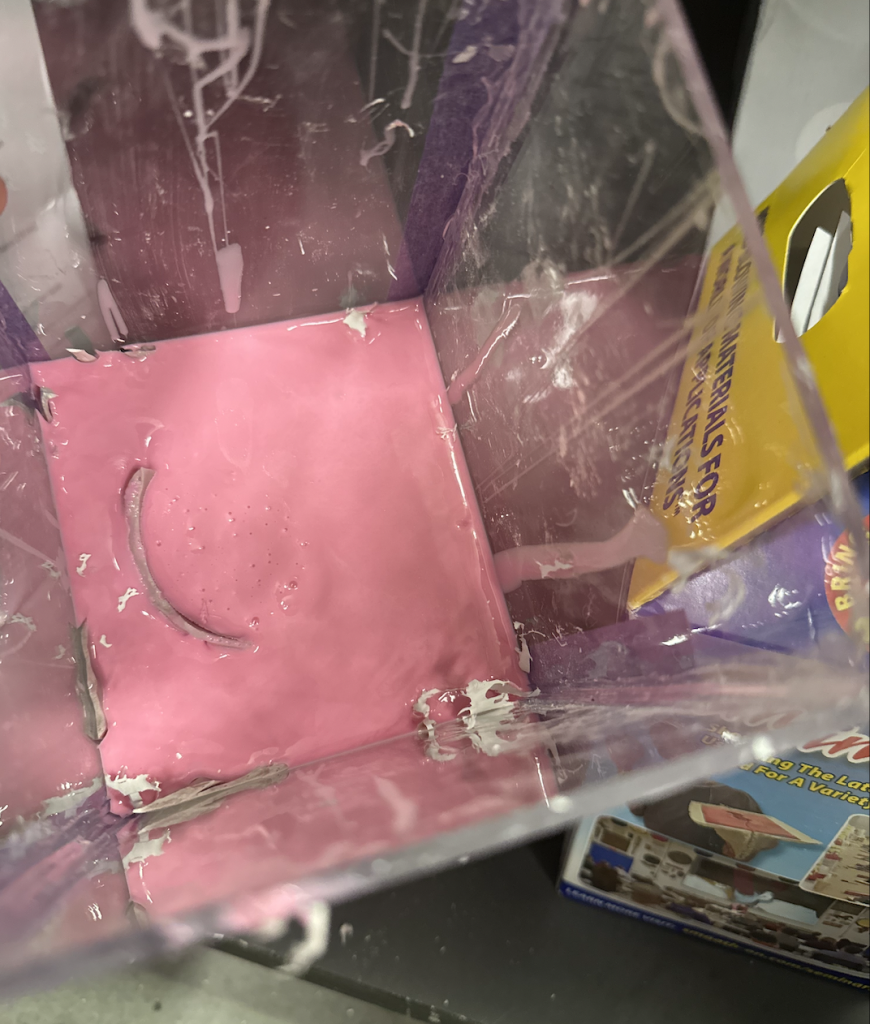
Casting added to Mold
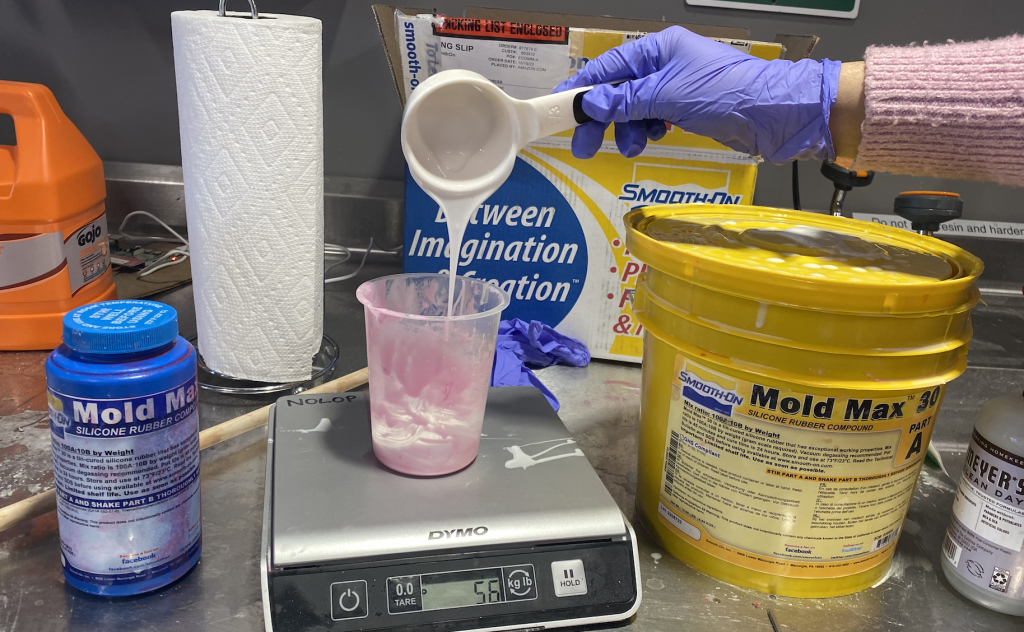
Two Piece Mold: Microneedle
Molding Material: 3D Printed Mold
Casting Material: Mold Max™ 30 Silicone Mold Rubber
Attempt 1: Attempted to 3D print a mold but the print failed at Scitech printers for unknown reasons.
Attempt 2 : Successfully 3D printed the mold, but encountered issues during casting with plaster. The plaster became stuck to the 3D printed mold, making it difficult to remove.

3D printed Mold, Failed Casting 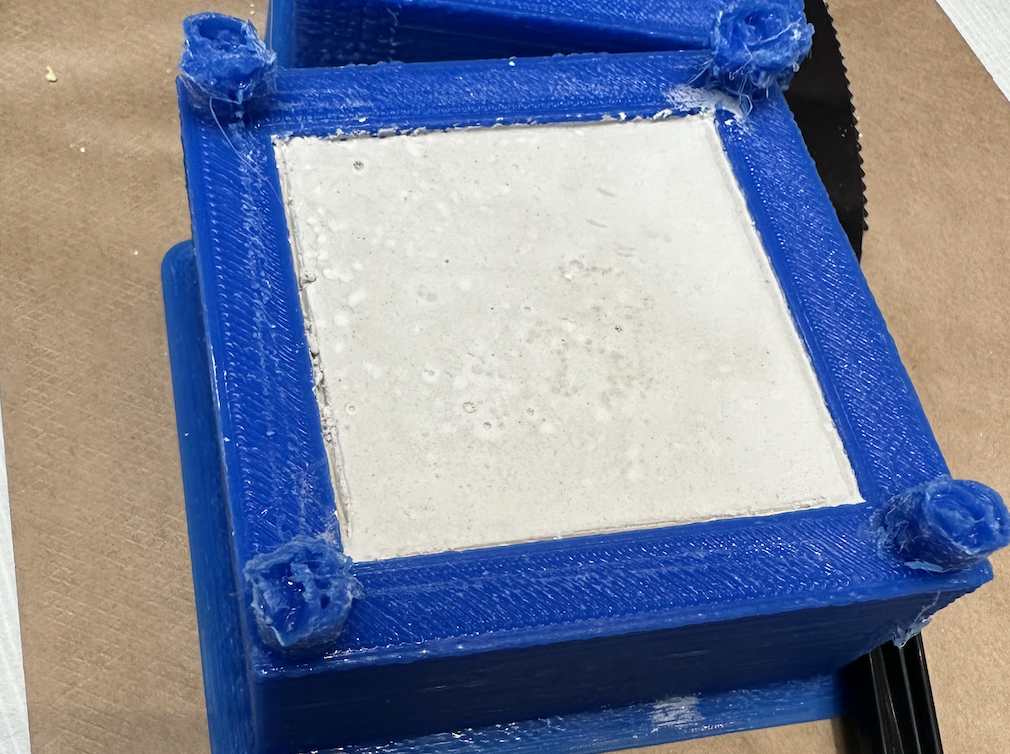
Attempt 3: The 3D printing was successful, and adjustments were also made to the previous print. This time, the casting was carried out using silicone.
